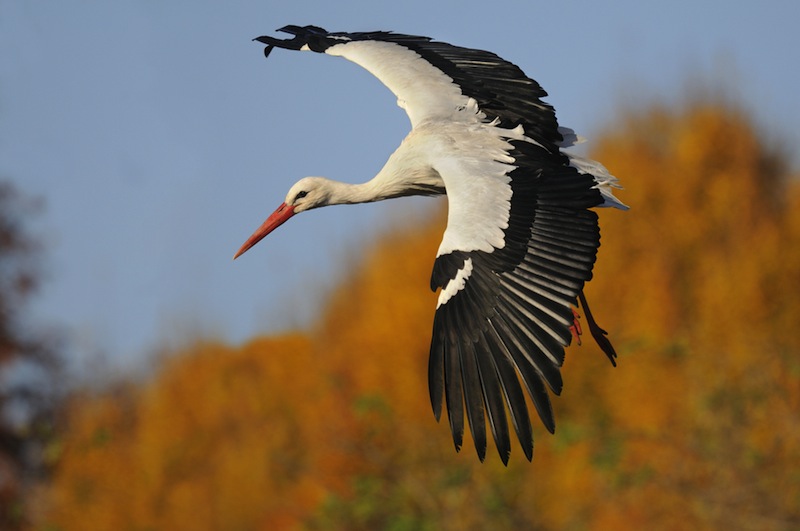Migrating Storks Can't Resist a Garbage Dump Feast

Garbage dumps may be such attractive pit stops for some storks that they shorten their migration routes to pay a visit, a new study suggests.
A few years ago, Andrea Flack, a postdoctoral researcher at the Max Planck Institute for Ornithology, was tracking the path of white storks from Germany, trying to get close enough to the birds to download flight data from the GPS trackers attached to their backs. Flack eventually found herself standing in an open garbage dump in Morocco, staring at her research subjects. Instead of migrating across the Sahara Desert like many other white stork populations, these birds preferred to spend the winter feeding on trash.
"We don't really know yet how much impact it has on their survival," Flack told Live Science. "We can think of it in two ways: On one hand, they have more to eat, and on landfill sites, some populations may increase in size. But we also don't know what kind of long-term effect this waste-feeding has. They might get poisoned or it might have some other long-term negative consequences like diseases." [Quest for Survival: Photos of Incredible Animal Migrations]
White storks (Ciconia ciconia) are quite abundant, and can be found from Spain and Tunisia to Russia and Uzbekistan. Yet Flack says little is known about how the different populations live. Flack collaborated with many other ornithologists to put high-tech GPS trackers on 70 young storks —not just in Germany, but across eight populations all over Europe and Africa—before the birds' annual migration.
The study, published today (Jan. 22) in the journal Science Advances, found wide variation in the birds' movements. While the birds born in southwest Germany ended their migration in northwest Africa, some storks born in Russia traveled as far south as South Africa. Meanwhile, other birds tagged in Uzbekistan didn't migrate at all and didn't travel far from their breeding grounds.
"This was really unexpected for us because the winter in Uzbekistan is quite cold," Flack said. "We originally thought they would migrate east, toward China, but they didn't. We think it might be connected to some sort of human-related feeding, that they feed on fish farms or some other source coming from humans, but we don't really know."
As humans have altered the landscape by way of landfills, infrastructure and agriculture, they've created obstacles for migrating animals, ranging from wild asses in Mongolia to whooping cranes in North America. But some animals, like white storks, could potentially profit from human changes.
Get the world’s most fascinating discoveries delivered straight to your inbox.
"That storks are opportunistic feeders and will use garbage dumps when available for foraging has been known for quite some time," said Arie van Noordwijk, a researcher at the Netherlands Institute of Ecology, who was not involved in the study. He noted that he has seen pictures of hundreds of storks feeding on garbage dumps in Turkey during their migration. It's also been documented that an increasing number of white storks feed on landfills in the Iberian Peninsula (though Flack said that could change as the European Union pushes to close open landfills). It's possible that feeding at garbage dumps could be a way for storks to save energy.
"I agree with the authors that it is remarkable that there is so much variation in migration strategies, but this paper shows that amount of flight and distance covered in migration are loosely connected," van Noordwijk told Live Science.
The GPS trackers Flack and her colleagues used were also equipped with sensors to measure acceleration, which is used as a proxy to measure how much energy the birds were expending. Storks are a soaring species, which means the birds tend to sail on the warm air currents instead of flapping their wings.
The study found that the birds that made longer migrations over Africa spent 15 percent less energy while flying, perhaps because of more favorable weather conditions. Traveling over Europe was more demanding, the researchers said. But those birds might have made up for the energy cost of their short and tiring journey by dwelling in areas with higher human population densities, where food is more readily available. The accelerometer data showed that the birds that made shorter, tougher journeys spent less energy on the non-migrating days they spent foraging.
Follow Live Science @livescience, Facebook & Google+. Original article on Live Science.



